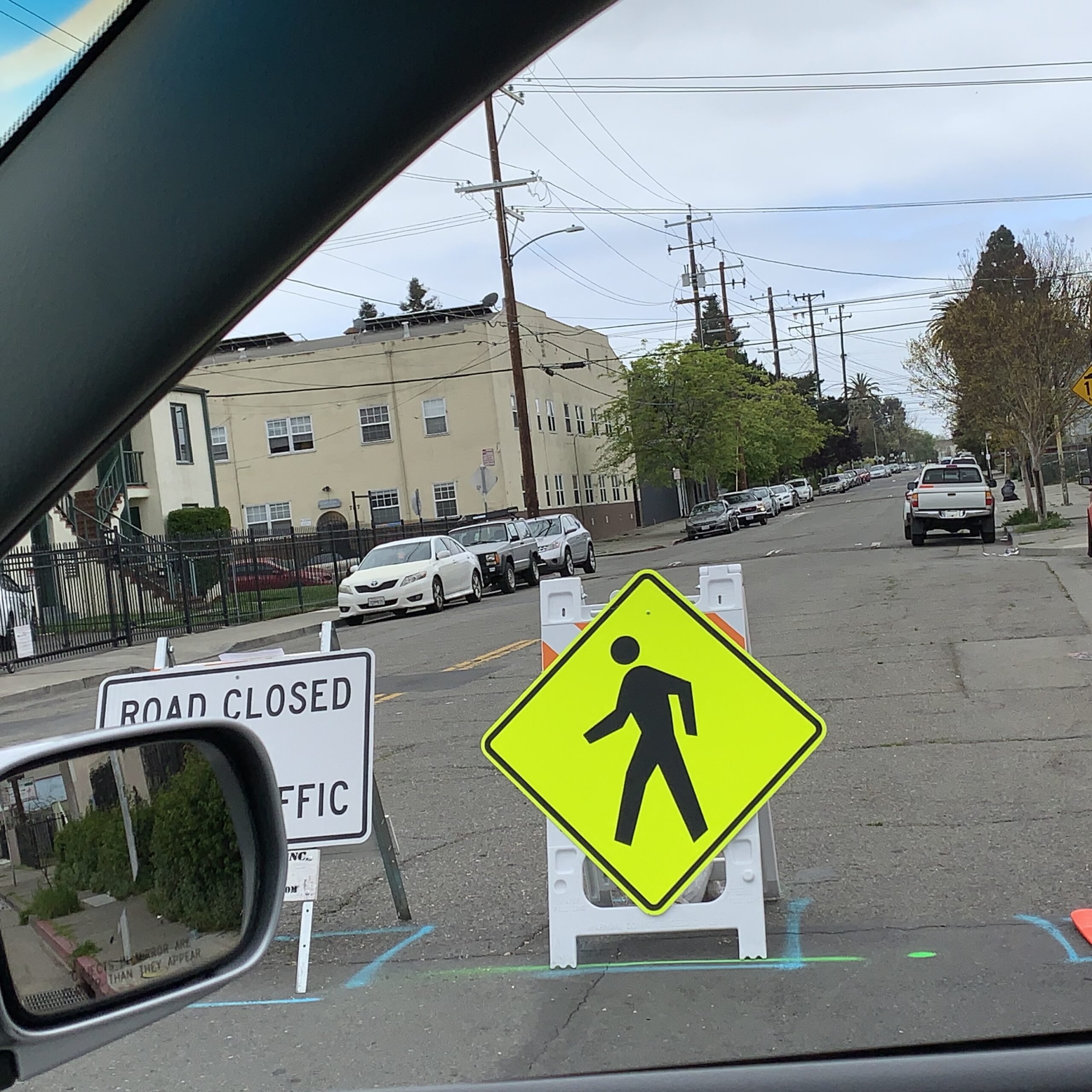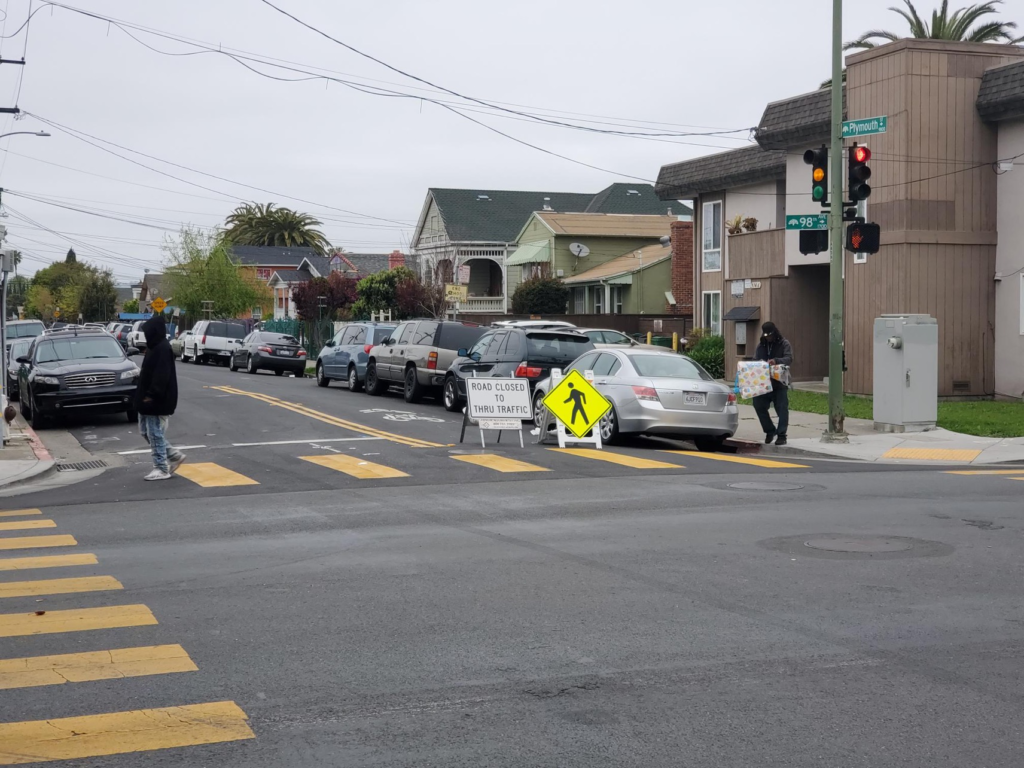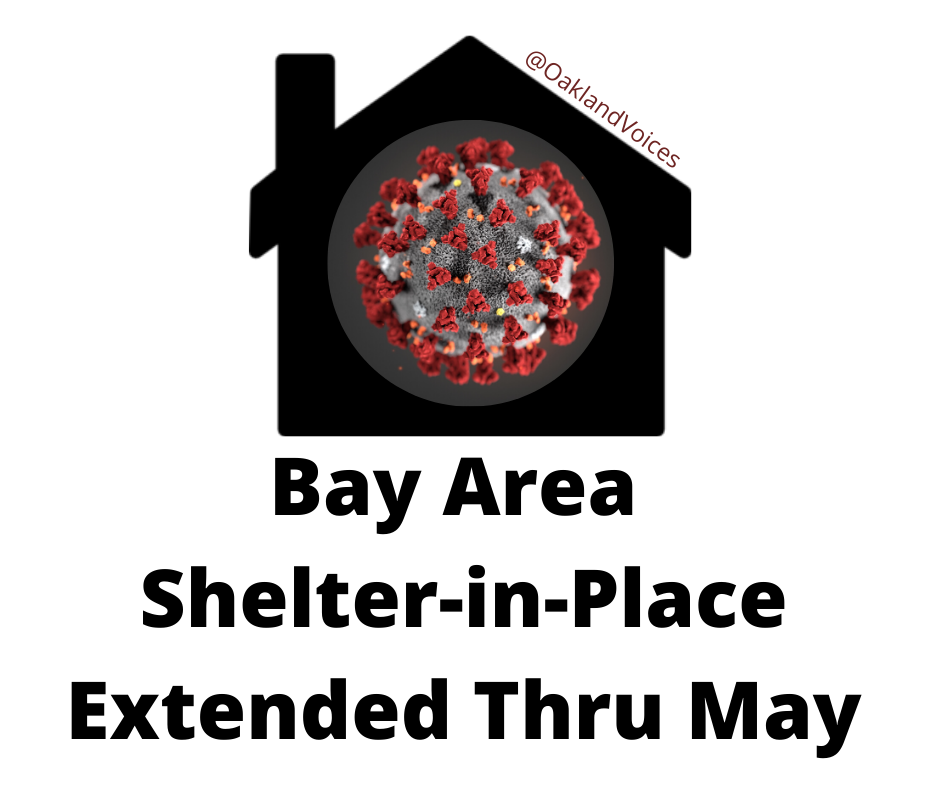
Oakland’s Slow Streets initiative, announced on April 9, will limit automobile traffic on approximiately 74 miles, or approximately 10 percent, of Oakland streets.
Oakland has the highest number of coronavirus cases among cities in Alameda County. Recent data shows that COVID-19 is having a devastating effect on populations that are historically victims of institutional, structural and systemic racism. Most of the proposed slow streets are in predominantly Black and Brown neighborhoods of East Oakland, and some advocates are concerned about the lack of transparency and outreach, and that the program may really be about gentrification.
Councilperson Dan Kalb of District 1, chair of the Public Works Committee, and Ryan Russo, head of the Oakland Department of Transportation, introduced the closed streets as part of a mapped 2019 Bike Plan update.
The City has made multiple announcements about Slow Streets. According to Kalb, the project is a temporary response to COVID-19 ending May 20. However, the City announced on April 16 that it identified an additional 11 miles of Slow Streets and would select 4-5 miles for “soft closures” starting last Friday, April 17.
Residents of slowed streets may leave and come home. If your final destination is on a Slow Street you are allowed to drive down the street utilizing caution for pedestrians and bicyclists, according to the announced rules. Slow Streets are marked by signs reading, “Road Closed to Through Traffic” and orange cones stenciled “OPD” declaring the streets as closed.
Charlie Levin lives in a quiet residential area of North Oakland where the streets have already been slowed. She has had trouble social distancing. Cars line the street near the school zone. The bike lanes receive heavy use. The effectiveness of Slow Streets there remains to be seen.
In contrast, there are no bike lanes on the portion of West Street in West Oakland, or on Plymouth Street in East Oakland.
“Slow Streets are another way of isolating residents in contested neighborhoods that are resisting further development they feel will not benefit the current residents.”
‘Tiny’ Garcia, Homefulness Project
Some wary communities have expressed concern about the lack of community input in the city’s decision and possible ulterior motives for the program. Advocates working with unhoused residents have called East Oakland “the last frontier for gentrification in Oakland.”
Lisa “Tiny” Gray with the Homefulness Project questions the street closures in East Oakland. “Safety is a word loaded with class and race in a community where looking unhoused makes you subject to arrest for standing, sitting or being,” Gray said. “When you talk about safety you have to define the threat.” Gray observed Oakland Police targeting unhoused community members on Slow Streets in East Oakland.
“Slow Streets are another way of isolating residents in contested neighborhoods that are resisting further development they feel will not benefit the current residents,” Gray said. A cyclist herself, Gray is reminded of how parklets and bike lanes heralded a demographic change on Mission Street in San Francisco.
While delivering sanitary items and dinners between 70th and 90th avenues in East Oakland, Mawunyo de Asis of The Village in Oakland also observed police citing unhoused people. She also witnessed housed families cited on their own property for not social distancing.

John Arthur Jones, III of the East Oakland Pillars views the Slow Streets plan as another tool for displacement and believes the city did not conduct enough outreach in advance. “Oakland has a long history of decisions being made by the City that adversely affect communities,” Jones said. “How information is shared with the community is problematic. ‘Shelter in place’ and ‘Come and exercise in the streets’ is a conflicting message.”
Russo and Oakland Mayor Libby Schaaf did not respond to inquiries. The Oakland Police Department said it is enforcing the shelter in place order and is “seeking voluntary compliance” from residents.
Ayodele Nzinga is an arts and culture theoretician/practitioner working at the intersections of cultural production, community development, and community well being to foster transformation in marginalized communities. Nzinga holds a Masters in Fine Arts in Writing and Consciousness and Doctorate of Philosophy in Transformative Education & Change; she resides in Oakland, CA. Described as a renaissance woman, Ayodele is a producing director, playwright, poet, dramaturg, actress, performance consultant, arts educator, community advocate, and a culture bearing anchor. Ayodele is the first poet laureate of Oakland.




Be the first to comment